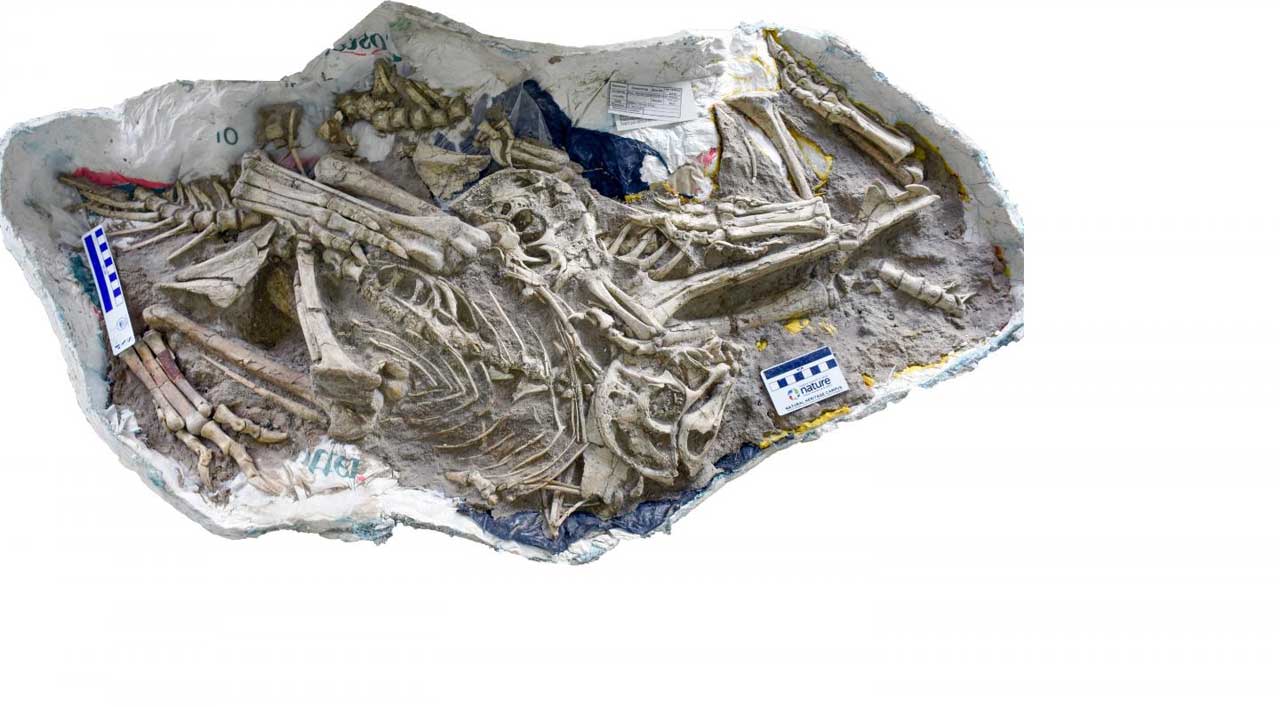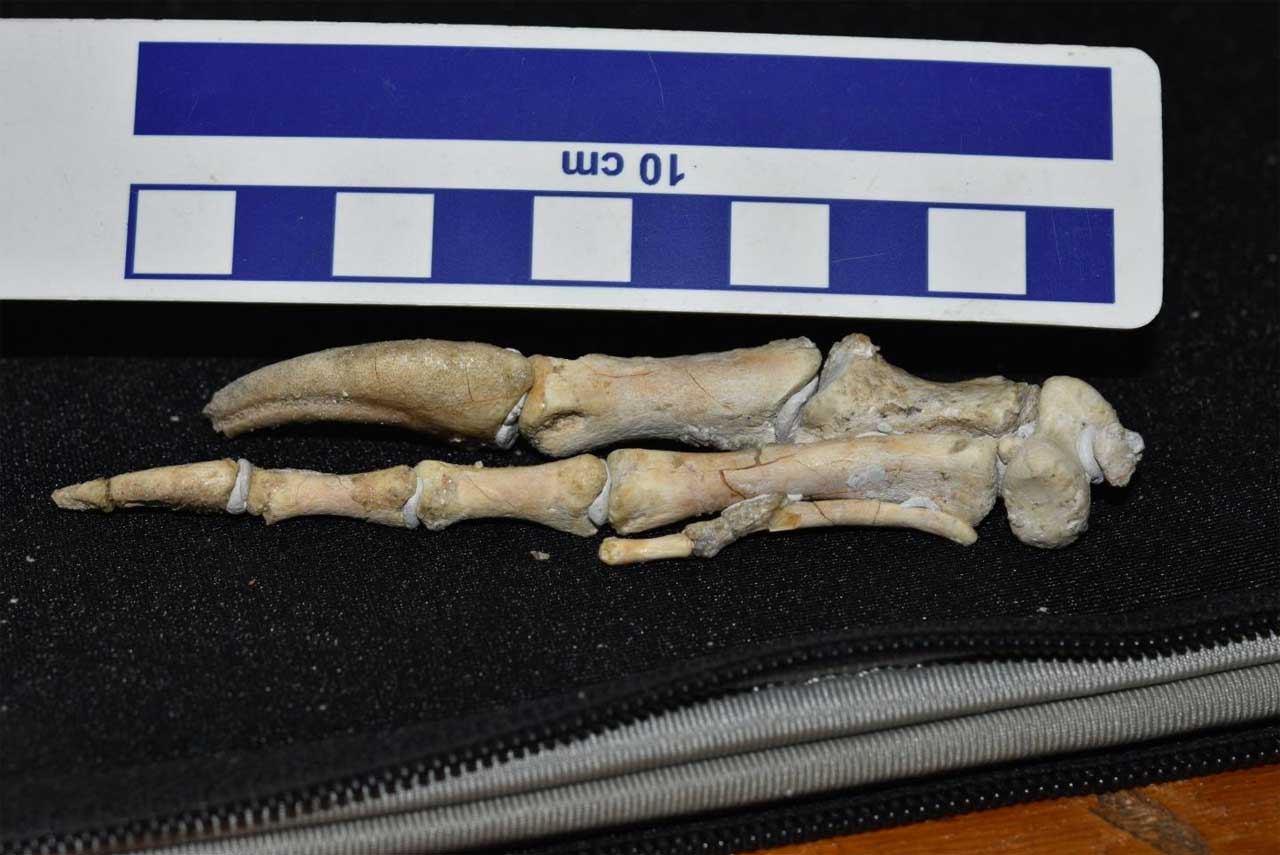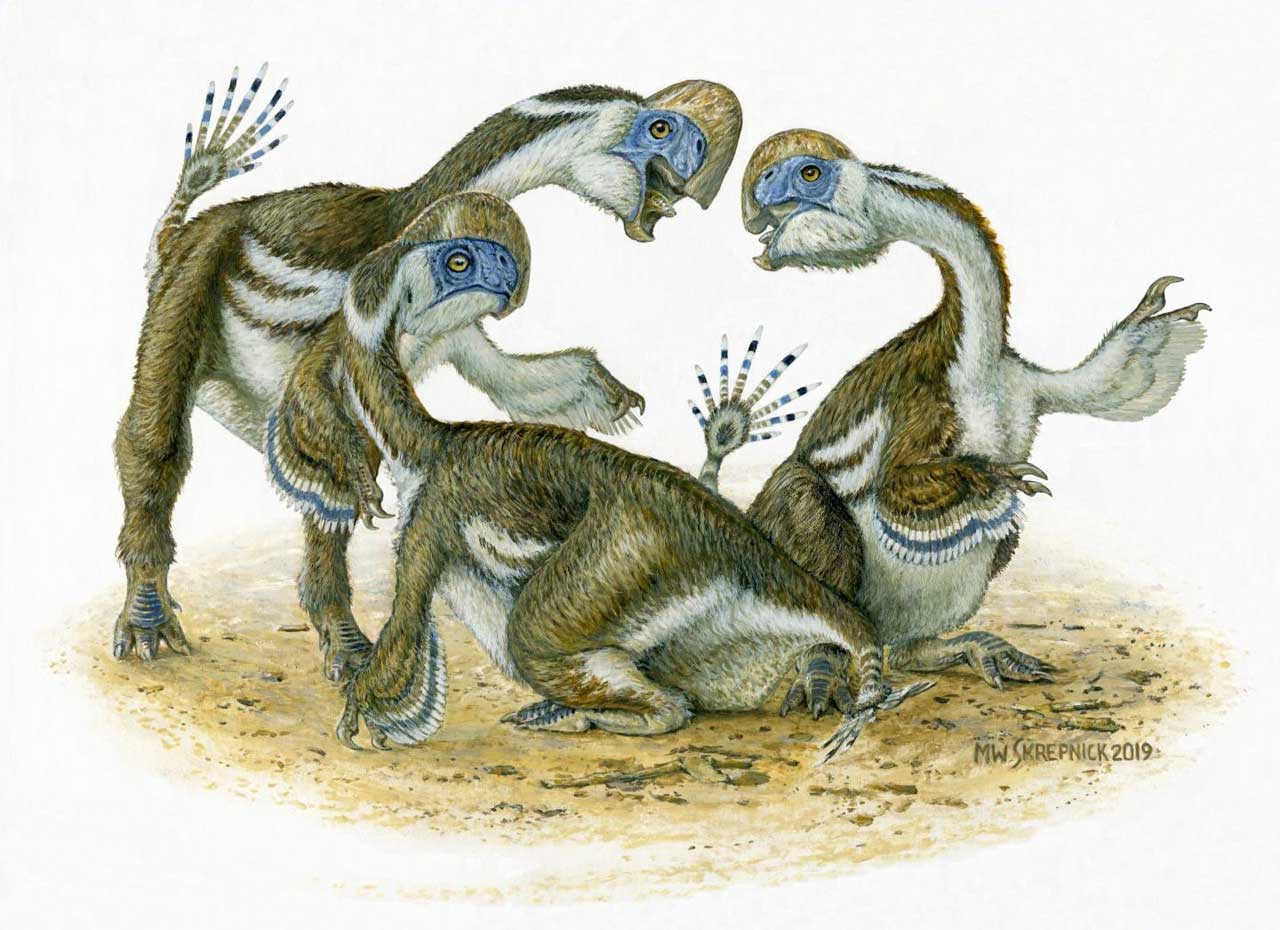New Toothless Parrot-Like Dinosaur Species Discovered
A new species of dinosaur has been discovered that has no teeth and two digits on its upper extremities. The discovery sheds light on a group of parrot-like animals that lived more than 68 million years ago. The strange species had one less finger on each forearm than its closest relatives suggesting an adaptation allowing the animal to spread during the Late Cretaceous Period.
Researchers uncovered multiple complete skeletons of the creature in the Gobi Desert in Mongolia in an expedition led by the University of Edinburg. The creature is named Oksoko avarsan, and is a feathered omnivorous creature that grew to be about two meters long and featured two functional digits on each forearm. The animals featured a large toothless beak similar to what is seen in modern parrots today.
The fossils discovered by the researchers are remarkably well preserved and provide the first direct evidence of digit loss in the three-fingered family of dinosaurs known as oviraptors. Forearm adaptations to the creature suggest they were able to alter their diet and lifestyles to allow them to diversify and multiply in their environment. Scientists have studied the reduction in size and eventual loss of the third finger across the evolutionary history of the oviraptor.
The group saw their arms and hands change drastically in conjunction with migrations to new geographic areas, particularly what is now North America and the Gobi desert. Researchers also found the creatures were social as juveniles with the fossil remains of four young dinosaurs found preserved resting together.
Dr. Gregory Funston from the University of Edinburg school of geosciences, leader of the study, says that the creature is interesting because the skeletons are very complete. He also notes the way they were discovered resting together shows that they roamed together in groups as juveniles.



